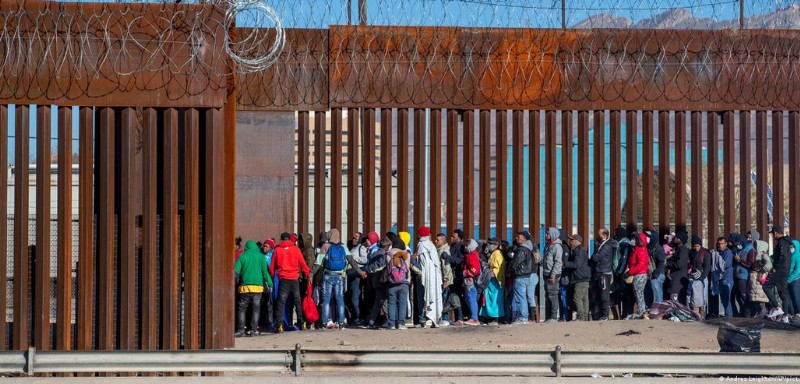U.S. and Mexican officials have agreed on a five-point plan on new immigration policies meant to deter illegal border crossings while also opening up other pathways ahead of an expected increase in migrants following the end of pandemic restrictions.
The COVID-19 restrictions have allowed U.S. officials to turn away tens of thousands of migrants crossing the southern border, but those restrictions will lift May 11, and border officials are bracing for a surge. Even with the restrictions in place, the administration has seen record numbers of people crossing the border, and President Joe Biden has responded by cracking down on those who cross illegally as well as creating new avenues meant as alternatives to a dangerous and often deadly journey.
Under the agreement, Mexico will continue to accept migrants from Venezuela, Haiti, Cuba and Nicaragua who are turned away at the border, and up to 100,000 individuals from Honduras, Guatemala, and El Salvador who have family in the U.S. will be eligible to live and work there. However, the U.S. will continue to turn away Cubans, Haitians, Nicaraguans and Venezuelans who cross illegally.
In an announcement Tuesday, it was said that 1,500 active-duty U.S. troops are deploying south for administrative support until Ocober 1. With Mexico now behind the U.S., border officials believe they may be able to manage overcrowding and other possible issues that might arise once the restrictions end. Mexico also stated that they will continue to accept up to 30,000 migrants per month from the four countries that are making up a ballooning share of the overall illegal border crossings, with no easy way to quickly return migrants to their home countries.
Meanwhile, the United States is accepting 30,000 people per month from the four nations for two years and offering them the ability to legally work, as long as they come legally, have eligible sponsors and pass vetting and background checks.
The administration also plans to swiftly screen migrants seeking asylum at the border itself, quickly deport those deemed as not being qualified, and penalize people who cross illegally into the U.S. or illegally move through another country on their way to the U.S. border.
But these efforts also draw potentially unwelcome comparisons to Biden’s Republican predecessor, Donald Trump, whose policies Biden frequently criticized.
“The Biden administration’s militarization of the border is unacceptable,” said Senate Committee on Foreign Relations chair Bob Menendez, D-N.J. “There is already a humanitarian crisis in the Western Hemisphere, and deploying military personnel only signals that migrants are a threat that require our nation’s troops to contain. Nothing could be further from the truth.”
Regardless of these comparisons, as a condition for the previous approval of National Guard troops being sent to the border, Homeland Security has to agree to work with the White House and Congress to develop a plan for longer-term staffing solutions and funding shortfalls to maintain security and immigration processing without the use of Defense Department resources.

